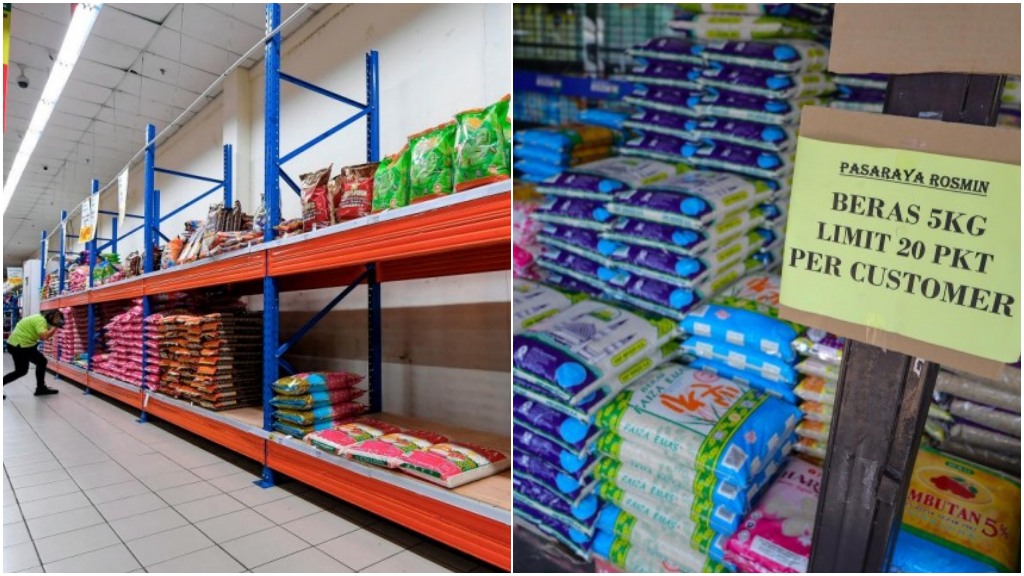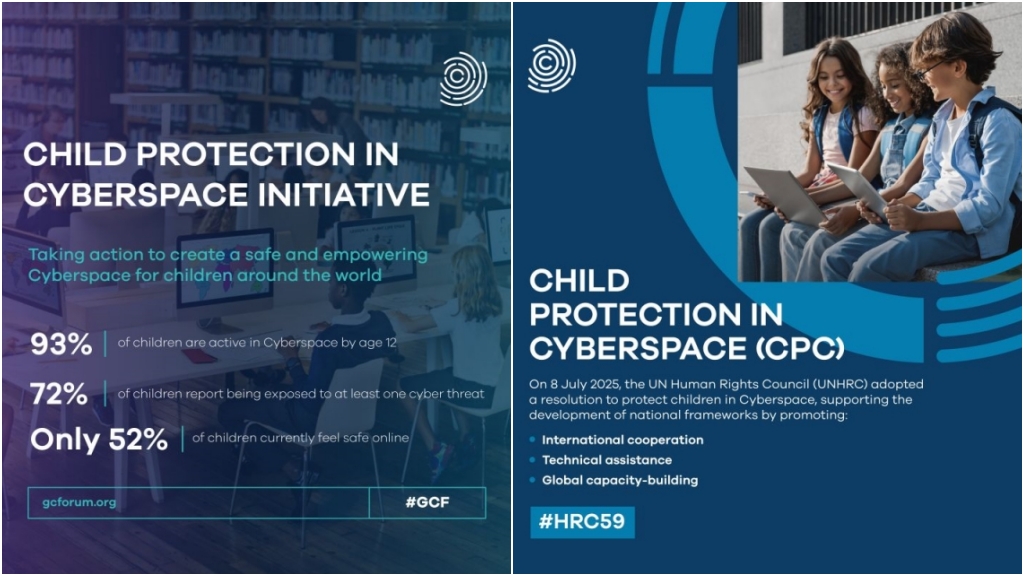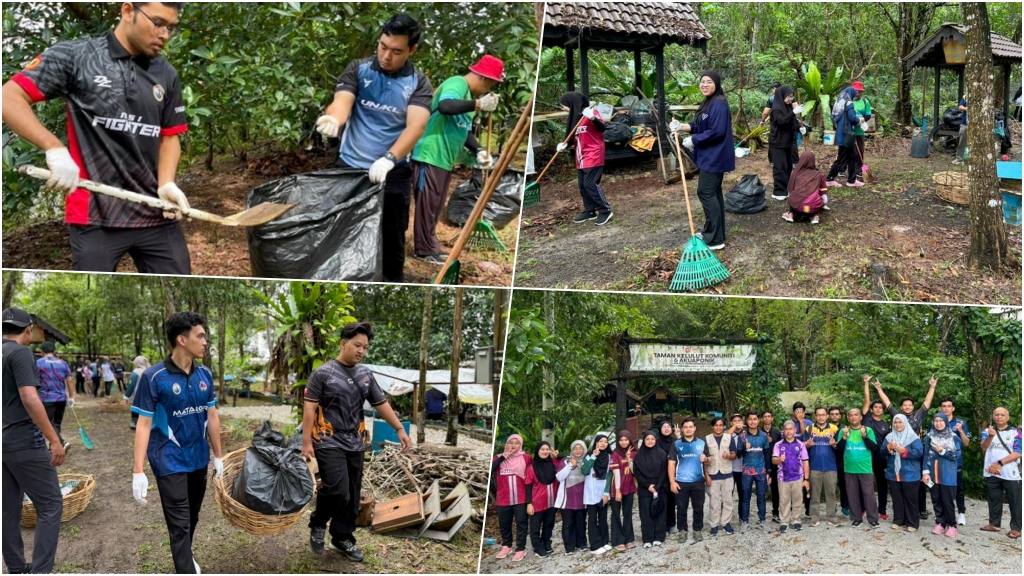
DR AINU HUSNA M S SUHAIMI
Malaysian Agricultural Research and Development Institute (MARDI)
It is a bit concerning to go to groceries these days and glancing at scarce shelves with the signs to limit the purchase of locally produced rice per family.
Being a rice eating Asean country, most Malaysians eats rice at least once or can be as much as 3-4 times a day. The phrase "belum dapat nasi hari ini" translated as I have not had rice today - often can be heard and to some, not have eaten rice, means not have eaten anything at all!
There are several theories why this is happening. Some are claiming that the increasing price of imported rice is causing higher demand for local rice causing its shortage.
A second claim is since selling imported rice is more profitable, some sellers are mixing or switching the packaging of local rice to imported rice.
Regardless of the reasons, this crisis does need to be addressed quickly as it affects the lower income group the most, especially the small-scale vendors selling rice-based meals who are feeling the pinch and struggling to get ends meet.
The increase in food price is also making it difficult for the lower income society to obtain the necessary nutrition that they need and this is jeopardising their health.

Although it seems that we as normal consumers are helpless to correct this crisis, there may be a more practical approach that everyone can take part of to reduce the impact.
Globally, 30% of food is wasted across the supply chain. This is almost the same percentage as how much Malaysia imports rice.
Malaysia produces 65% of the needs of the country and imports the 35% which is usually specialty rice such as basmati rice and fragrance rice.
Study done by MARDI in 1985 shows that 28% of rice is lost upstream while it has been reported that 36% is how much The Philippines wastes its imported rice yearly.
As reported in 2007, by Waste and Resources Action Programme (WRAP), a climate action NGO, starchy foods are most commonly thrown away after being prepared, with 45,000 tonnes of it is rice, which is sadly a massive amount.
During the last MYSaveFood Ramadhan 2023 campaign, where food and drinks were rescued from Ramadhan Bazaars, nasi berlauk (rice dishes) was the second highest food type that was unfinished and was rescued to be distributed.
From 55 Ramadhan Bazaar nationwide, 2.5 tan of rice dishes were rescued with the approximate value of RM44,000. This numbers how that rice is much wasted everywhere and we need to put a stop to this.
It is even sadder to see people wasting rice if we realize how much time and effort is needed to produce rice.
In general, it takes about six months to produce rice, and in The Philippines, studies carried out at the International Rice Research Institute (IRRI) have shown that 500–1,000 litres of water are needed to produce 1 kg of rough (un-milled) rice.
That is 200 bottles of 5L oil. And, to produce, a bag of 5kg rice that we often purchase, it requires 5x more water!
With so much efforts and resources put in producing rice, it is just so wrong if rice is wasted unnecessarily. It is wrong to waste it, as it is a sign of ungratefulness of the blessings that we have.
Now that we are experiencing the reduction of rice supply, hopefully it is an eye-opener for us to appreciate what we have and not waste it.
If we are not careful, with increasing challenges such as climate change and pest and disease, rice will be harder and harder to produce and our kids and grandkids may not able to have rice and will be missing the yummy nasi ayam, nasi goreng, nasi kerabu, nasi beriani, nasi lemak that we all enjoy so much now.
So, let’s decide now to do something about it and start to stop wasting food, particularly rice.

There are many ways for us to reduce rice wastage and I shall divide this into saving rice when eating out, at home and while organizing an event or a party.
It is no doubt that some people have bigger appetite and can finish any amount of rice plated to them. But for the small-eaters, when taking rice in ‘nasi campur’ or buffet style restaurants, do just take as much rice as your little tummy can accommodate.
For ala-carte orders, if possible, do ask for half portions or if portions can’t be negotiated, do share a meal with a family or friend.
I also call on vendors to accommodate these small-eaters and provide smaller portions if needed.
If, your orders came and you can tell that you are not able to finish the meal, separate out a portion first and pack or ‘tapau’ it home to be your next meal.
Not only this reduces food wastage, it reduces the need to cook or buy your next meal too. What a saver!
Perhaps at home, it is easier to reduce food waste as purchasing and throwing are easier to controlled. Alas, this is not necessarily so.
Institute of Islamic Understanding Malaysia (IKIM)’s centre for Science and Environment Studies’ Fellow Azrina Sobian has said that households produced the largest food waste at 38% compared to wet markets (24%), restaurants (23%) or hotels (7%).
Over-buying, lack of proper-storage and luxurious have been named among causes of food wastage in households.
So, the first thing that can be done to reduce food wastage at home is proper planning. This includes planning of purchasing as well as planning of amount to be cooked.
Everyone knows, rice can only be kept for a certain period of time before we start seeing rice lice which will eventually spoil the rice. So, it is very important to estimate correctly how much rice is needed by a household. Storage is also important to ensure rice lasts longer.
Cooking the right amount of rice according to the number of households is also important so that there is less left-overs. If there is left-overs of rice, do recreate other dishes from it.
Fortunately, rice is one dish that can easily be made into other dishes such as fried rice and rice fritters (cucur nasi).
Many does not know this, but rice can also be frozen if there is still too much cooked. Freezing rice can really increase its shelf-life, but do be prepared as the texture may alter slightly.
Last but not least, rice can also be fed to pets and last alternative, it can be made into fertilizer and can be composted.
Being Malaysian, most festivities, weddings and parties will always have rice dishes. Unfortunately, rice would always be the one with left-overs.
One way to reduce this is to negotiate with the caterer to reduce the amount of portion of rice prepared. Hosts can also allow guest to pack the rice to bring home.
Trust me, moms always appreciate food that can relieve them from cooking, so more likely than not, will appreciate the opportunity to bring food home.

When we reduce food waste, they are multiple benefits. First of all, like any good deed, it will make us feel good.
Apart for that, reducing food waste will reduce greenhouse emission which contributes to climate change.
For the family economics, reducing food waste can actually save money and monthly expenditure and for our health, eating a small amount of rice can help in reducing our waist-line which is always a plus!
Last but not least, reducing food waste is also a way to improve food security as it improves the availability of food. It really does not make sense to produce food to be thrown away.
So with all those benefits, there really isn’t any reasons for us not to stop wasting rice, so let’s start saving rice with our next meal today!
Dr Ainu Husna MS Suhaimi is the Principal Research Scientist, MARDI and advocator for reducing food loss and waste. This article is personal view of the author.











